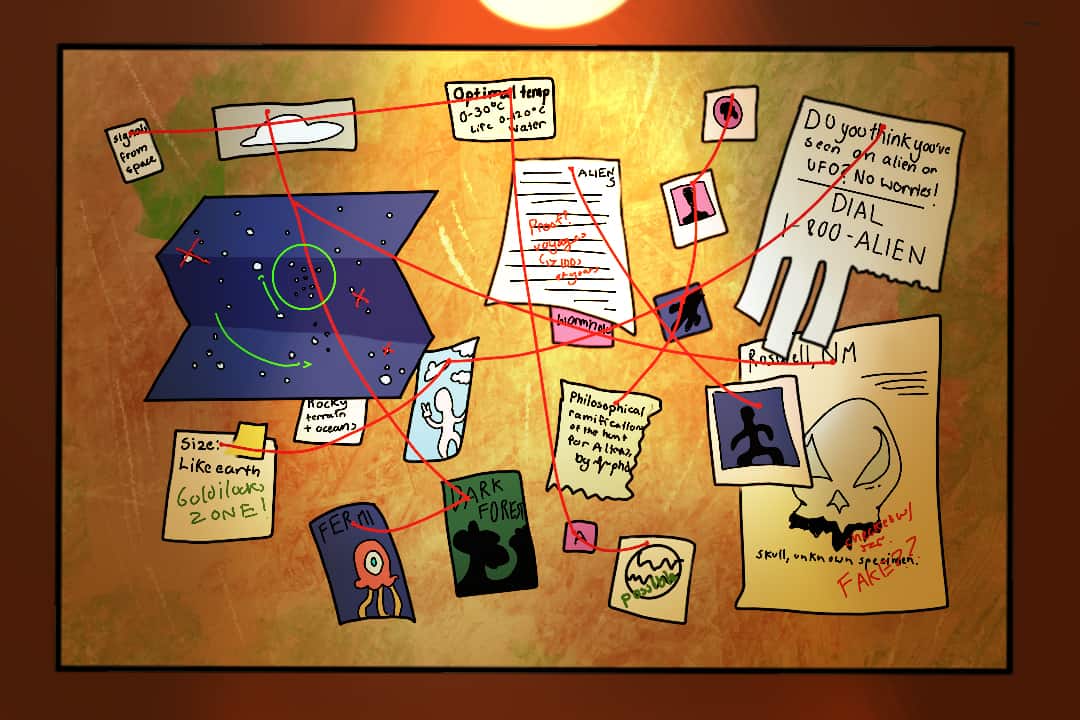Extraterrestrial life is often brought up in conversations about space. Our universe holds more stars and planets than humans can imagine, so concepts like aliens or other life will always come into question. When searching for life on other planets, scientists look for planets that are at a critical distance from their parent star, such that water remains liquid; planets with oceans or large bodies of water to stabilize temperatures and avoid overheating; and planets with ideal atmospheric density.
Think about the distance between Earth and Mars: 189 million kilometres. The number is already incomprehensible, yet Neptune is billions of kilometres away. Given such a scale, wouldn’t it feel lonely if we were the only living species in the universe?
Habitable zones
Research on extraterrestrial life assumes that life on other planets must have identical observable traits as life on Earth, like water. Water is essential for life because it facilitates key chemical reactions in animal, plant, and microbial cells and because it prevents overheating since it can absorb a lot of heat before its temperature rises.
In order for planets to contain liquid water, they must be within a range of distances from their parent star, the star around which the planets of a solar system orbit. The distance from the parent star at which liquid water could exist on the orbiting planet is known as the habitable zone.
David Waltham, a professor of geophysics at Royal Holloway, proposed a hypothesis for intelligent life on other planets. He claims that the longer a planet stays within this habitable zone, the greater the chance for intelligent life to form.
His findings show that a distance of about 180 million kilometres from a yellow dwarf star has the most significant possibility for intelligent life formation. At that distance, Waltham says that intelligent life may form within an 8.5-billion-year period.
The search for life focuses on planets with similar planetary and positional features to Earth. For example, scientists look at planets a similar distance from their Sun-like star. Our sun is a yellow dwarf star, which generates energy through the nuclear fusion of hydrogen to helium in its core. This solar energy powers life on Earth, but these stars are less abundant than red dwarf stars.
How water is impacted by habitable zones
José Cernicharo — a professor at the Fundamental Physics Institute in Spain — and his team use the Infrared Space Observatory (ISO) satellite to research and observe water in space. The satellite launched into space in 1995, and recorded, captured, and shared infrared images until 1998. The ISO mission served as an opportunity to observe water distribution in astronomical environments.
During Cernicharo and his team’s search for water in space, the ISO observed ice within comets in our solar system and different galaxies. They found that the water vapours generated around stars would form ice on planets and objects in space without a heat source. This suggests that planets too far from a heat source — like the sun — might have water, but their distance from their parent star exceeds the habitable zone such that water does not remain liquid.
These studies showed that water becomes redistributed across galaxies through impacts between objects in space and planets or asteroids. When collisions from large bodies like asteroids or comets shuffle molecules, oxygen may mingle with other elements and bear water or carbon dioxide, eventually making its way to planets. The tricky part is that these planets need to be a critical distance away from their parent star such that the water that makes its way onto the planets remains liquid.
Atmosphere
There have been recent endeavours to find life on Mars because it is the planet closest to Earth after Venus. Although Venus is in the habitable zone, it is too hot for habitation. There are some significant differences between the atmospheres of Earth and Mars. Thomas Navarro, a planetary scientist at McGill University, and his team compared the atmospheres of Earth and Mars.
First, even though water has been found to flow on Mars, the lack of oceans on Mars presents a problem. Oceans are vital for a planet and atmospheric health. The ocean currents transport warm water to cold areas and keep a levelled temperature distribution. Unlike Earth, Mars does not have oceans to stabilize temperatures. Planets without large bodies of water, like Mars, will face dust storms because of the uneven heating.
Second, Navarro’s team noted that Mars’ atmospheric density was too low to support life. A low atmosphere density makes Mars difficult to live on because temperatures peak too intensely for life to spawn.
For life to exist, a planet’s atmosphere must also have an abundance of nitrogen because that element acts as another essential element for life, aside from carbon. Microorganisms need small amounts of fixed nitrogen in the atmosphere to live. Humans need much more. The atmosphere must reach a certain ratio and level of elements, along with being dense enough to trap heat for life to exist.
Earth got lucky to be in the habitable zone, to have water and oceans, and to have ideal atmospheric density. Even for planets with billions of years within a habitable zone, life — much less intelligent life — might not come into existence. Yet, as we gather more data on water and as our technology improves, astronomers will continue to find Earth-like planets and Sun-like stars in neighbouring galaxies and universes. NASA has confirmed up to 5,300 exoplanets — planets outside our solar system — and 9,245 candidate exoplanets. With a universe this vast, life may exist outside our solar system, and humans might not be alone after all.


